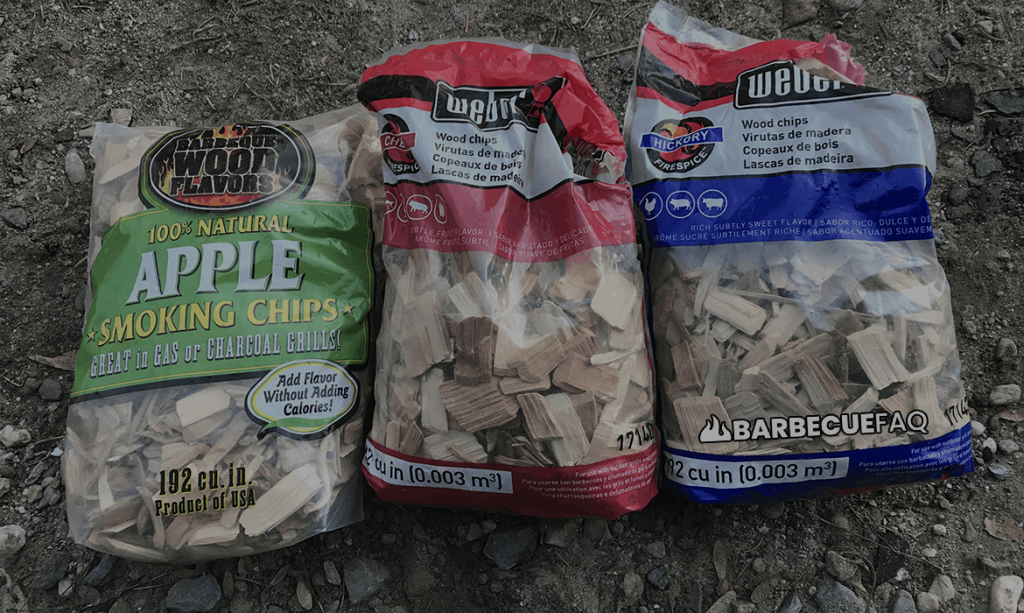Click a Smoker to Learn More
The Different Types of Smokers
Smokers are primarily categorized based on the form of hardwood used to generate smoke as well as how they produce heat.
Offset Smokers

- Fuel Source: Sticks or Splits of Hardwood
- Wood Incorporation: Sticks or Splits of Hardwood
- Average Upfront Cost: ~$500-$5000
- Ease of Use: Hardest of all Smokers
- Maintenance Requirements: Medium to High
In a traditional offset smoker, the firebox produces the heat and smoke which travels across the meat in the smoke chamber, and then exits through the smokestack on the opposite end.
The firebox is quite literally offset from the cook chamber.
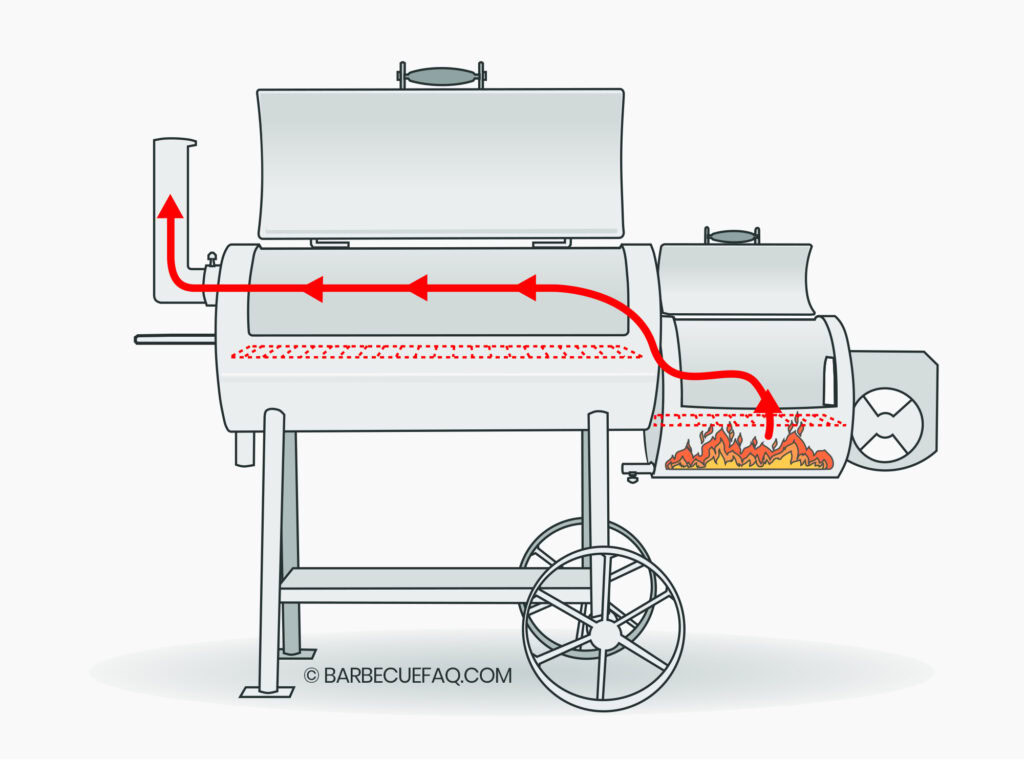
The smokestack on an offset smoker can also be setup to “reverse-flow.”
A heat baffle set below the grate causes the smoke to travel below the baffle and across the meat in the opposite direction.
The smokestack is also placed perpendicular to the firebox.
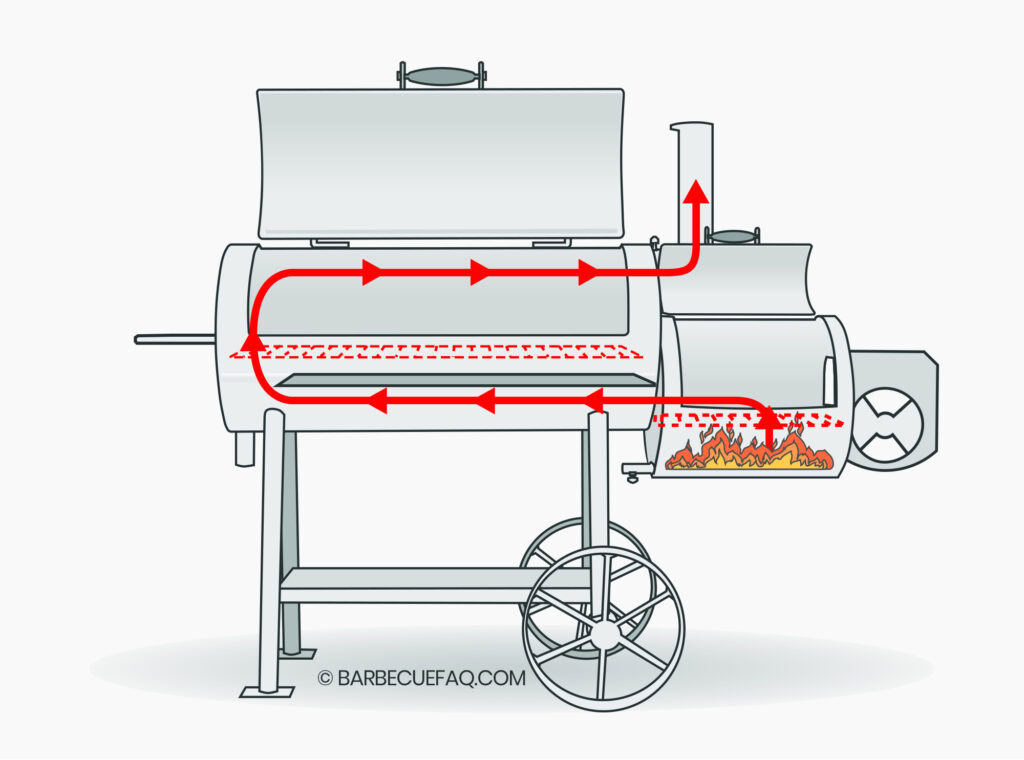
The benefits of reverse-flow being:
- More uniform heat distribution (could be a con depending on what you’re smoking)
- The baffle below the grate will cause radiant heat which will cook the meat from the bottom while the smoke and heat will cook the top (usually results in shorter cooks)
- The drafting mechanism makes reverse-flow smokers less susceptible to high winds/cross winds
While technically a stick burner could use charcoal as a base and then use hardwood to impart flavor, the purpose of these smokers is to use only hardwood (sticks).
Granted, you could use charcoal simply as a base and then add wood, which will burn down into coals.
Offset smoker fire management requires a rather steep learning curve, however the smoke flavor output is essentially un-matched.
Charcoal Smokers
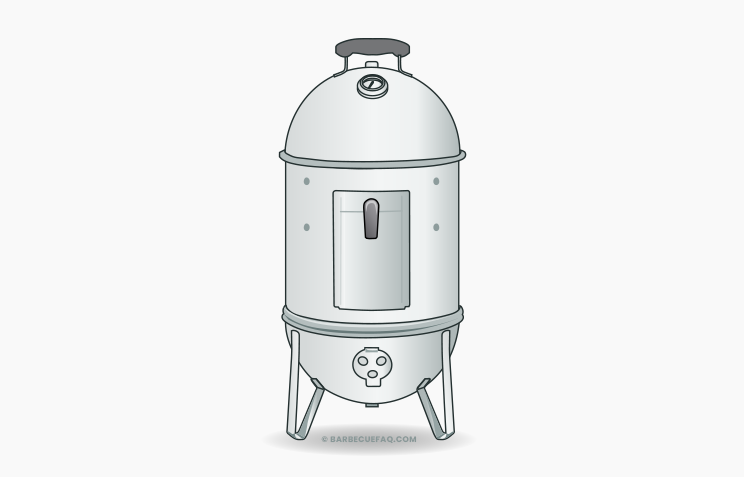
- Fuel Source: Briquettes or Lump Charcoal
- Wood Incorporation: Wood Chunks or Chips
- Average Upfront Cost: ~$200-$2000
- Ease of Use: Medium
- Maintenance Requirements: Medium
- Average Warranty: 1 year to Lifetime; Depending on parts and brand.
The “charcoal smoker” category includes a number of different types of smokers.
Including but not limited to:
- Bullet Smokers (Weber Smokey Mountain)
- Drum Smokers (Pit Barrel Cooker, Gateway Drum Smoker, DIY)
- Ceramic Komodo ovens (Komodo Joe, Big Green Egg, Primo)
- Kettle Grills (Weber, PK Grill, SNS)
Charcoal smokers are typically comprised of a charcoal basket/firebox, cooking chamber, and a lid.
For example, here’s a cross-section of a Weber Smokey Mountain:
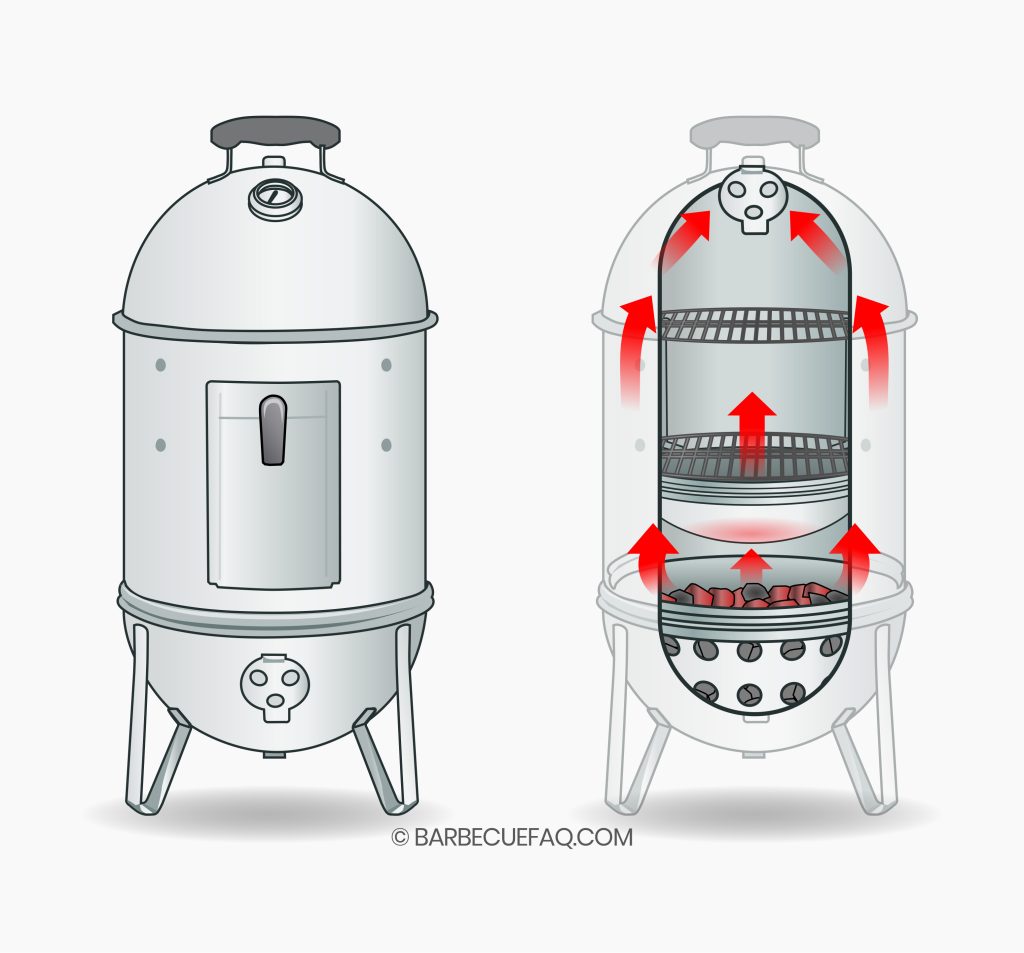
The charcoal basket is where the briquettes or lump charcoal are contained and where wood chunks or wood chips are added to produce smoke.
You’d then place your food on the grates, away from the heat source.
In the above setup, the Bullet smoker uses a water pan to deflect the radiant heat directly below the food and to introduce humidity.
Where-as in other charcoal smokers, you’d setup a two-zone fire where the meat can receive convective heat instead of radiant heat.
The setup looks like this:
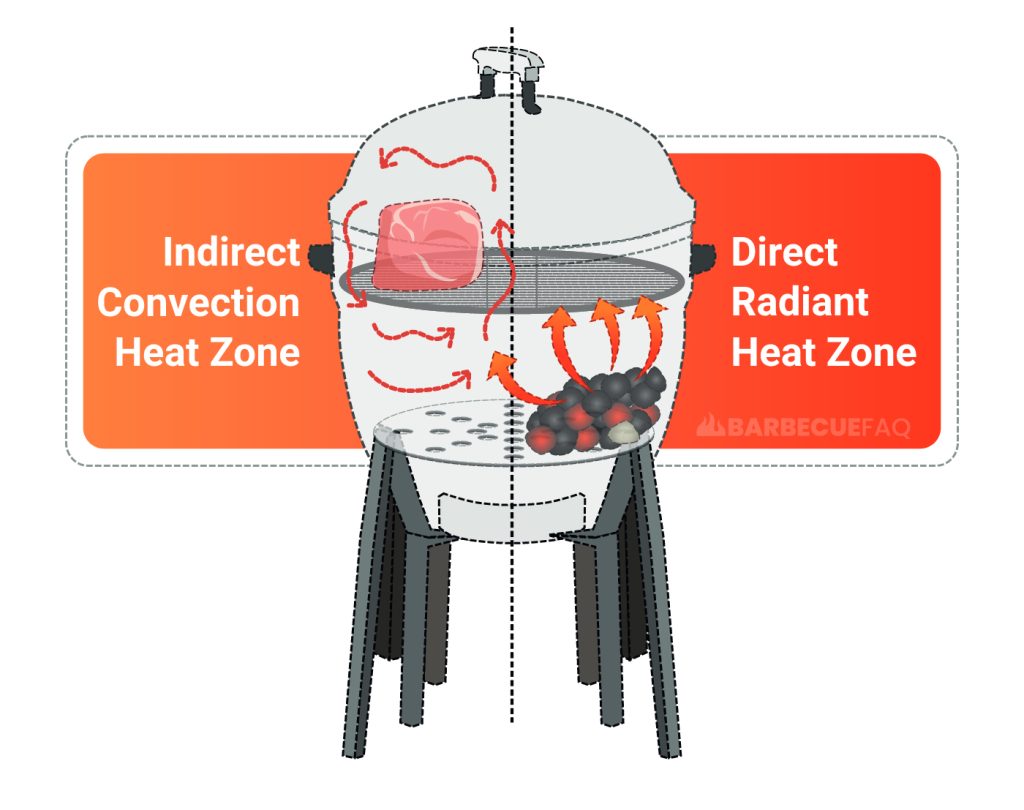
The lid caps the environment – it also will have an exhaust vent to allow smoke and steam to escape.
The only real learning curve is temperature control via the intake and exhaust vents.
In terms of flavor, it’s probably 2nd best – behind offset smokers.
Pellet Smokers

- Fuel Source: Hardwood Pellets
- Wood Incorporation: Hardwood Pellets
- Average Upfront Cost: ~$500-$3000
- Ease of Use: Easy
- Average Warranty: 1-5 years on certain parts
- Can be a smoker or a grill
A pellet smoker (or grill) is similar to that of a kitchen oven.
You simply:
- Plug it in
- Set a temperature
Once pre-heated you put the food in your smoker and wait.
Pellet smokers are typically comprised of a hopper, an auger mechanism, a firepot, combustion (intake) fan, heat baffle and deflector (drip-pan), a cook chamber, and smokestack.
The hopper is where the “food-grade” pellets are contained.
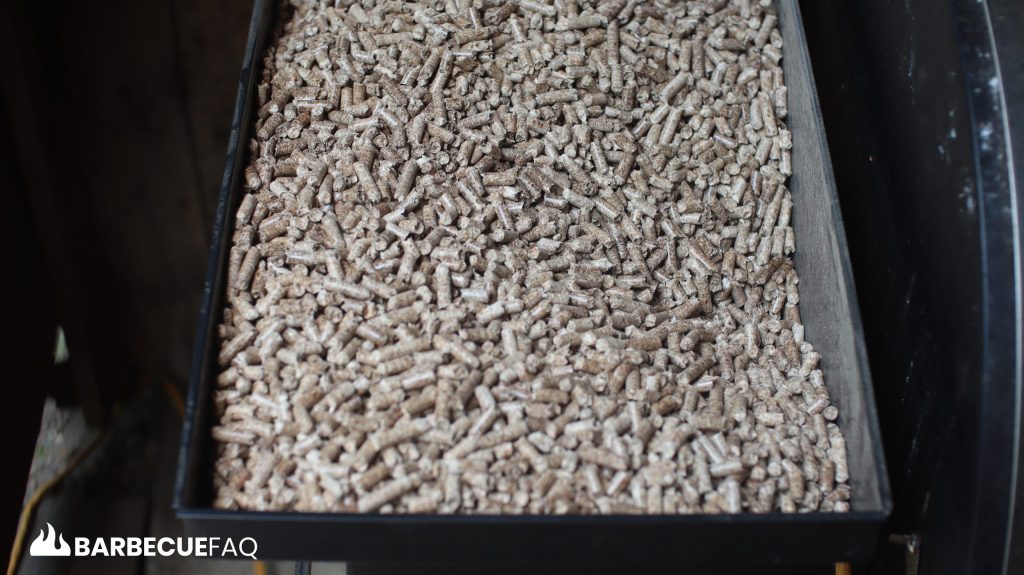
The auger works via a motor/electricity to pull pellets into the firepot.
The firepot features an igniter rod that ignites the pellets which are then fed with oxygen via an intake fan. The baffle and deflector (drip-pan) create a convection of heat that then cooks the food.
The smoke/heat then exit the smoker via the smokestack.

Pellet smokers typically have two modes of function or “controllers”:
- PID (proportional-integral-derivative)
- Non-PID controllers.
PID is a more precise way to correct temperature (usually accurate to +/-5F).
Non-PID is less accurate and is designed to output more smoke (usually accurate to +/- 15F) because the grill is dumping and smoldering more pellets, more often.
Smoke output on pellet smokers is pretty mild in the grand scheme of things, regardless of the brand of pellets you buy.
In recent years, brands like Camp Chef and Pitts and Spitts have engineered better ways to add hardwood chunks to be near the firepot – allowing for far better smoke flavor.
Electric Smokers
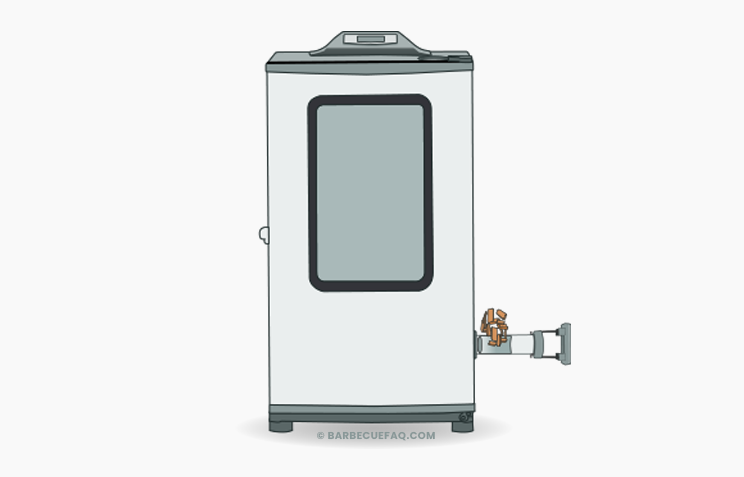
- Fuel Source: Electricity
- Wood Incorporation: Wood Chips
- Average Upfront Cost: ~$200-$500
- Ease of Use: Easy
- Average Warranty: 1 year
- Maintenance Requirements: Minimal
Electric smokers feature a cooking chamber with cooking racks that are vertically oriented, an electric heating element, wood chip tray (and tube), water pan, and dampers/vents.
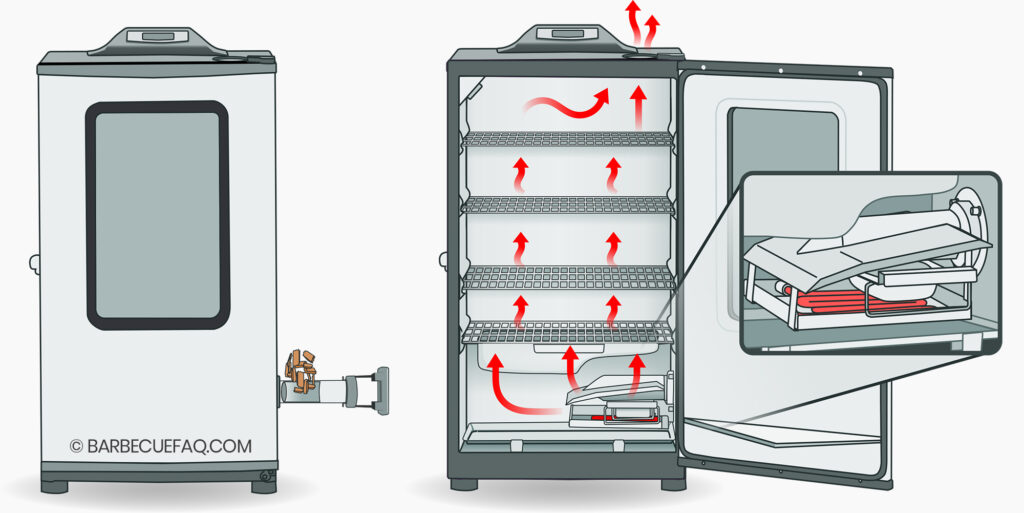
Heating elements like the ones in electric smokers work through the conversion of electrical energy into heat through Joule heating.
The “wood chip tray” is just above the heating element which causes wood chips or pellets to smolder.
In order to help minimize the opening and closing of the cooking chamber, a “wood chip tube” is used to drop wood chips in the tray (pictured left).
My Masterbuilt electric smoker was the first smoker I ever bought. I still use it one to this day to smoke beef jerky, cheese, and fish.
I also use my Electric smoker to hold meat at a food safe temperature overnight. If a brisket finishes early, you can hold it above 145F so that it’s ready the next day.
Overall, smoke flavor is pretty lackluster in electric smokers – but smokey nonetheless.
They’re great for things like Jerky, cheese, or fish but in almost every other case I’d rather use my Charcoal smoker simply because the flavor is better.
Gas Smokers
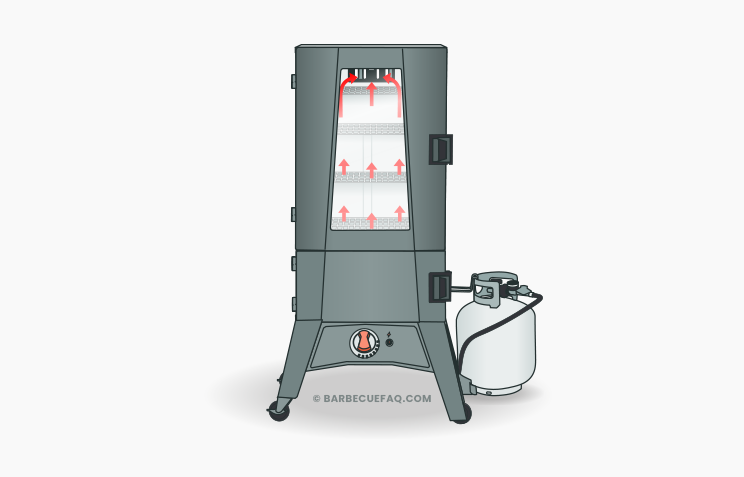
- Fuel Source: Liquid Propane (LP)
- Wood Incorporation: Wood Wood Chips or Chunks
- Average Upfront Cost: ~$200-$1000
- Ease of Use: Easy
- Average Warranty: 1 year
- Maintenance Requirements: Minimal
Gas smokers make use of either natural gas or liquid propane as a fuel/heat source and wood chips are then used to add flavor.
There are two main types of gas smokers that are used:
The first being a similar chamber setup to that of an electric smoker.
The difference being the heating element (propane burner). The cooking racks are vertically oriented and the heating element ignites the wood chip tray.
A damper is then used to help exhaust steam and smoke.
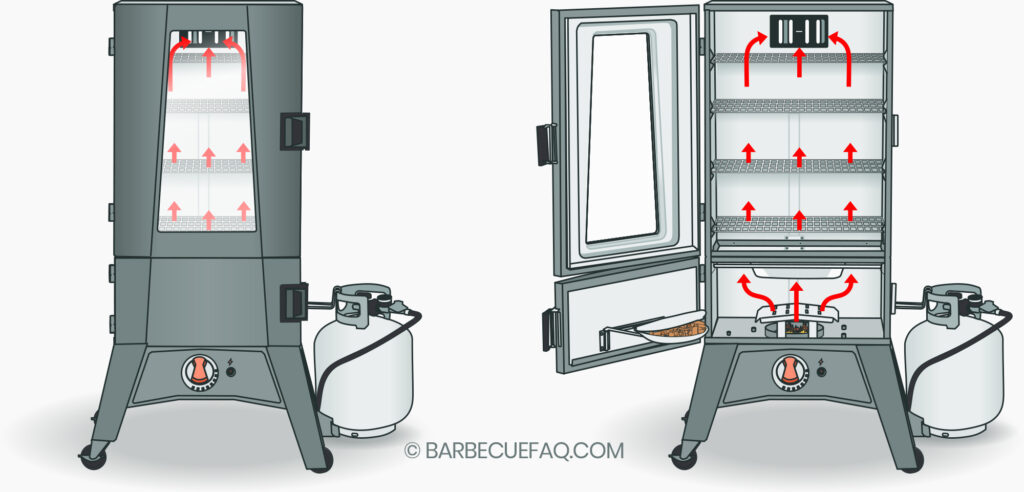
The second type isn’t actually a smoker, it’s a grill.
Smoke can be introduced via wood chips or food-grade pellets being placed inside a smoke box/tube.
The box/tube is then placed on the flavorizer bars and smoke is allowed to build in the environment.
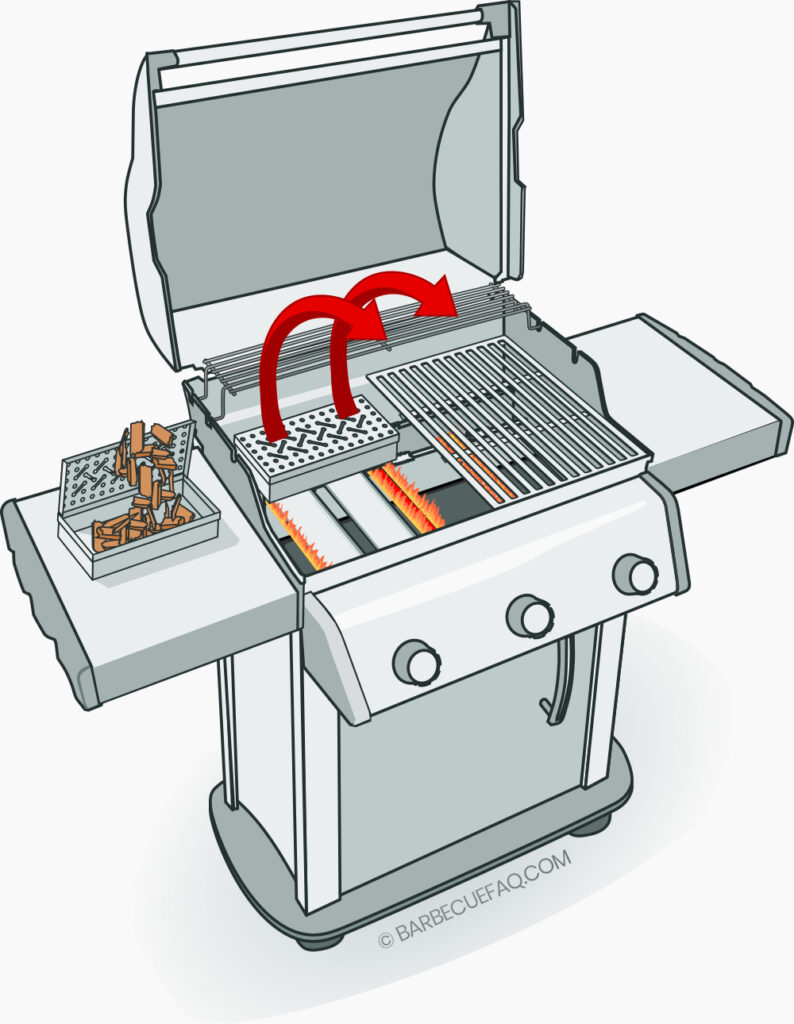
The situation here is similar to the electric smoker.
Due to the lower combustion temperatures, the smoke output – while pronounced – isn’t the sort of “clean” smoke that people associate with good barbecue.



